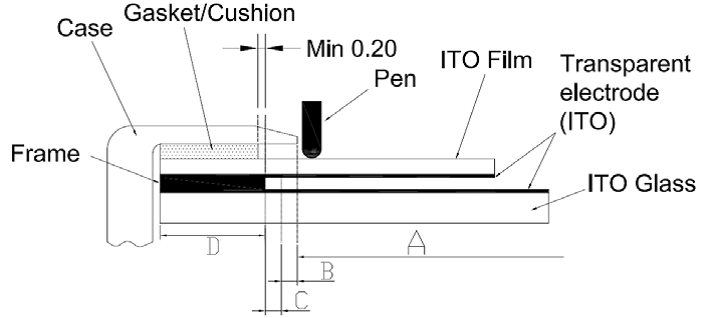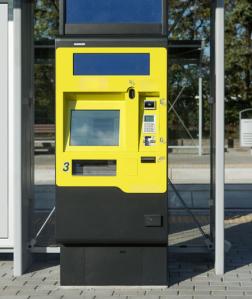Resistive touch panels (RTP) are relatively simple compared to capacitive (CTP). They consist of a double film mounted on glass with four wires attached. Even though it is a very mature technology, we still have customers coming to us with reliability issues.
Is your enclosure putting pressure on the display?
The most common problem is that the enclosure or the fitting gasket puts pressure on areas of the display that aren’t designed to handle it. The diagram below illustrates the point. Area A is the active area, and if pressed a touch is registered. It’s obvious that if the gasket or the bezel encroaches on this area and applies pressure, there is a risk of false touches, or of actual touches being masked.

Most issues that we see are a result of the gasket or bezel applying pressure around the edge of the active area in areas B and C in the diagram. Pressure in area B may not register as a touch, so it can’t be used as part of the user interface. Equally, it might be registered, so it can’t be used as part of the display mount either. In fact, pressure here may degrade the performance and durability of the display leading to field failures and service life issues.
In Area C, where the electrodes meet, pressure is specifically prohibited, as an excessive load will cause serious and permanent damage.
The area of the display that can safely be used to mount it in the enclosure is the inactive or ‘dead’ area D. That is where bezels, gaskets and any other mechanical attachments can safely reside.
Sharp-eyed viewers will note the presence of a pen into the diagram. If required RTP can be designed to operate with a pen only. In this case, the spacers between the two layers are placed very close together, so that only pressure from a fine-tipped pen brings the two layers together. A comparatively blunt finger only puts pressure on the spacers and doesn’t record a touch.
As a company we normally recommend Capacitive Touch Panel (CTP) because the reasons for adopting Resistive are rapidly disappearing. RTP was once lower cost, but CTP is coming down in price now. RTP is often used where gloved hands are present, but CTP technologies are improving here too.

If you’re thinking about which touch technology to adopt, but are put off CTP because you’re not familiar with it or think it’s too complicated, take a look at our Whitepaper for more information or contact us to discuss alternative touch options, we will be happy to help!


